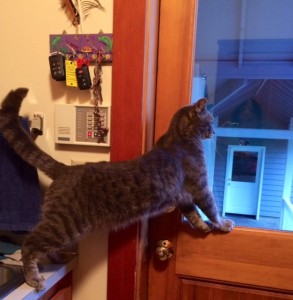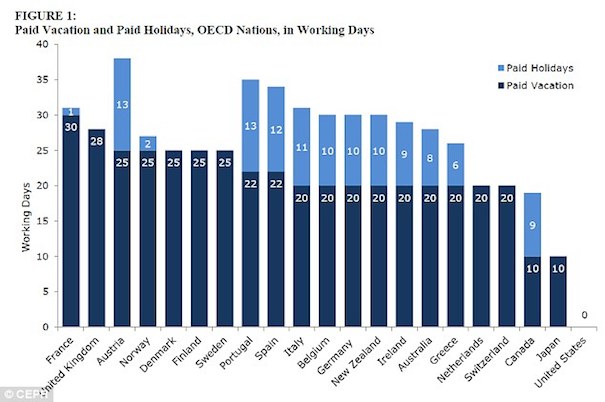Category — Health research
What, me worry? Hell, yes.
 Wait…isn’t worrying is bad for your health? Doesn’t worrying turn you into a negative, pessimistic person who sees danger around ever corner? Doesn’t it cause stress, which triggers tsunamis of cortisol and lead to chronic inflammation, the gateway to all kinds of diseases?
Wait…isn’t worrying is bad for your health? Doesn’t worrying turn you into a negative, pessimistic person who sees danger around ever corner? Doesn’t it cause stress, which triggers tsunamis of cortisol and lead to chronic inflammation, the gateway to all kinds of diseases?
Maybe not.
Maybe there is a positive side to worrying. As a life-long, deeply committed, card-carrying worrier (well, okay, I don’t have a card), I hope so. And research backs me up.
To be clear, I am not talking about obsessive, nail-biting, heart-palpitating anxiety. Occasionally, that’s called for, as when the Zombie Army is at your door or the person appointed to head the Department of Education doesn’t actually support public education. Those unlikely scenarios aside, I’m referring to everyday worrying: What if I catch this awful stomach flu everyone seems to have? Will I run out of gas before I reach the gas station? Suppose nobody buys my newest book? Any of my books?
Here’s the good news for us committed worriers:
We are more highly evolved! Worriers are more aware of potentially threatening situations than non-worriers. And that awareness would have kept our ancestors alive while other, less cautious cavefolk perished. It’s kinda nice up here at the top of the evolutionary pyramid, ain’t it?
We’re quick(er) thinkers. Moderate levels of some worry-related hormones (like cortisol) actually fire up the brain’s learning abilities, according to research from the University of Colorado. If you think you’re in trouble, it makes sense that your brain would be hyper-focused and ready to absorb and tackle new information, the research suggests.
We’re motivated. Obsessive worrying can be debilitating, but worrying-lite can lead to constructive, thoughtful self-evaluation and action, shows research from Stanford University. Anxiety can push us to plan more carefully, work harder and persevere.
We’re better prepared to deal with both good and bad news. There’s a kind of worrying that researchers have dubbed “defensive pessimism.” It’s when we dive head-first into the worry pool, but as we’re swimming/ flailing around we come up with contingency plans for various outcomes. Whatever does happen, we are in better shape to cope with (or enjoy!) it than those who try to distract themselves from worry. So says some very interesting research from UC Riverside.
As one of the UC/ Riverside researchers is quoted as saying, “Set your expectations low and think through the negative possibilities. It drives optimists crazy.” And it works!
Think of worrying as self-empowerment. I do. (When I’m not worrying about worrying so much.)
April 5, 2017 2 Comments
Longevity Tourism
Yes, it’s a thing.
And no, it should NOT be a thing. Let me explain:
“Longevity tourism” involves well-heeled, first-worlders visiting Blue Zones like the little village in southern Italy that I wrote about here. Blue Zones are geographic locations where people live significantly longer, astoundingly healthier lives than the rest of us. In addition to the little villages on the southern Mediterranean coast of Italy, there is Sardinia, the Nicoya Peninsula of Costa Rica and the Greek island of Icaria, among others.
In the emerging business of Longevity Tourism – part of (shoot me now) the “silver economy,” (i.e. moneyed babyboomers), travelers venture to these places on quests to discover the secrets to living long, healthy lives. If you read this blog (and my book Counterclockwise), you know that I am all about living a healthy, vital life. But does Longevity Tourism hold the key?
Come with me as we travel to the sunbeaten village of Perdasdefogu, in the rugged interior of Sardinia, to meet the Melis family, Guinness World Record holders (2012-1014) for “oldest family on the planet.” Consolata (that’s her picture above) lived to 107. Her younger siblings include Claudina (103), Maria (101), Antonio (97), Concetta (95), Adolpho (93) and Vitalio (90).
What’s their secret?
They live, fully integrated, in the multi-generational life of their extended family.
They live, fully integrated, in the life of the village — an isolated, close-knit, sociably community, the same one they were born into.
They live in a culture that expressly treats the elderly with dignity and respect – and doesn’t make a big deal about it.
Families in this area carry a specific gene on their Y chromosome that significantly reduces the risk of heart attack and stroke. The gene pool is “unusually undiluted” because of the isolation of the villages and the family intermarriages.
They are poor. They grew up (and continue to live) hardscrabble lives. The men were goatherders, traversing miles of rugged terrain every day, living almost exclusively on goats’ milk and pistoccu (a thin, crisp local bread). “There was no money,” one nonagenarian explains. “It was difficult to get enough to eat.” Another villager adds, “You exchanged some of your cheese for a bit of bread. If you were having a good month, you got a little meat.”
These are not the “secrets” longevity tourists want to hear.
I’m thinking that we who care about health and wellness should leave these villagers to live their lives while we focus on creating a meaningful, engaged, multigenerational culture, one that we continue to respond to, actively participate in and enhance as we age.
How about that secret?
October 12, 2016 4 Comments
La Dolce Vita
 For the past two weeks I’ve been staying a scant 80 miles from the little village of Acciaroli on the Mediterranean coast of southern Italy. For those who track “anti-aging” (that is to say pro-healthy aging) research, that name might sound familiar. This town of barely 700 residents has been the object of intense research. In Acciaroli, one out of 10 residents is over 100 years old. Also, they appear to be immune to chronic illnesses, such as heart disease and dementia. And their circulatory systems could be mistaken for those of 20 year olds.
For the past two weeks I’ve been staying a scant 80 miles from the little village of Acciaroli on the Mediterranean coast of southern Italy. For those who track “anti-aging” (that is to say pro-healthy aging) research, that name might sound familiar. This town of barely 700 residents has been the object of intense research. In Acciaroli, one out of 10 residents is over 100 years old. Also, they appear to be immune to chronic illnesses, such as heart disease and dementia. And their circulatory systems could be mistaken for those of 20 year olds.
Why? What is responsible for such an unusually high number of healthy centenarians? Please, teams of researchers, descend on this sleepy village, apply the masterful tools of 21st century western scientific inquiry and tell us “the secret” so we too can live lives just like the Acciaolians.
Okay, then: Scientists from the San Diego School of Medicine along with colleagues from Rome’s Sapienza University recently spent six months studying the residents of Acciaroli.
First I’ll tell you what they found. Then you’ll see why I think these “secrets” are meaningless to you and me.
Major finding: Acciarolians eat lots of anchovies and flavor everything, every meal with fresh rosemary. Anchovies are packed with heart-healthy omega-3 fatty acids. Rosemary, long been considered a healing herb, has been shown to improve brain activity, prevent cognitive dysfunction and protect against carcinogenic compounds.
Got it. Secret revealed! Eat lots of anchovies. Season everything with rosemary. Live to be 100. Or, better yet, since most people don’t like anchovies, swallow omega-3 pills. And, since fresh rosemary is not so widely used in American cuisine, assume some enterprising nutriceutical company is marketing powdered rosemary in a capsule and down a few of these every morning. Done.
Um, no. The secret to their long lives is: They live completely different lives than we do. They are immersed in a rich culture based on strong and enduring family ties and the healing power of the church, both of which contribute to a sense of larger purpose as well as everyday happiness and satisfaction. The old people live lives fully integrated into the life of the village. Their lives include some hard work but also prodigious amounts of leisure time. Due to the location of the village, everyone walks long distances and hikes through the mountains as part of their daily activity. In the late afternoon and evening, people gather in the cantinas to drink wine or coffee, relax, talk, debate.
Put that in a pill and swallow it.
September 28, 2016 5 Comments
How sweet it is(n’t)
 Here’s something you don’t want to hear.
Here’s something you don’t want to hear.
The medical news and dietary recommendations about sugar that we’ve all been reading about for the last five decades have been largely shaped by — wait for it – the sugar industry. An industry trade group called the Sugar Research Foundation (today known as the Sugar Association) apparently paid scientists in the 1960s to downplay the link between sugar and heart disease, and focus instead on saturated fat as the culprit.
What did we hear about sugar? Okay, it caused tooth decay. Big deal. Brush your teeth. The sugar-induced energy rollercoaster could be promoted as “quick energy.” Remember the get-a-life-eat-a-Snickers-bar ad campaign? If a person was concerned about health…FAT was the real enemy. Fat was the killer. Fat was the fast-track to heart disease.
For the gory details on the collusion between sugar execs and leading Harvard scientists, one of whom went on to help draft the national’s dietary and nutritional plan, check out this recent New York Times story
and the JAMA Internal Medicine research upon which it was based.
And, lest you think this collusion between agriculture, business and science was just a remnant from the Bad Old Days, please note that just last year it came to light that Coca-Cola, the world’s largest producer of sugary beverages, had provided millions of dollars in funding to researchers who sought to play down the link between sugary drinks and obesity.
At the risk of merely replacing evil demon fat with evil demon sugar (remember evil demon salt?), allow me to share this information about the health effects of sugar.
Sugar can damage your heart
Excess sugar increases the risk of heart disease (yes, like fat), but there is also strong evidence that sugar affects the heart’s pumping mechanism and may also increase the risk of heart failure.
Sugar and obesity? Yep.
Fat causes fat, we’ve been told. Fat in the diet is the culprit. Eat nonfat. Eat low-fat. But has this explosion of low-fat items in the grocery store halted out obesity epidemic? No. Consider sugar. Excess fructose consumption has been linked to an increase in a condition called leptin resistance. Leptin is a hormone that tells you when you’ve had enough food. If you develop leptin resistance, you don’t get the message that you’re full. You keep eating. And eating.
Sugar specifically promotes belly fat (the worst kind)
Fructose in particular appears to actually cause visceral fat cells to mature. A study of overweight kids who consumed fructose-laden drinks showed fat accumulation in the trunk, setting the stage for a big belly and even bigger future risk for heart disease and diabetes.
Sugar may be linked to cancer production and may effect cancer survival
When we consume too much sugar, we throw our insulin production out of whack. There’s a well documented connection between insulin resistance and cancer. (link between insulin resistance and cancer. There is also a connection between elevated sugar and poorer survival rates for some cancers. ( Further studies have found negative associations between high sugar and starch intake and survival rates in both breast cancer patients and colon cancer patients.
Sugar and aging? Uh huh.
A 2009 study found a positive relationship between glucose consumption and the aging of our cells. Aging of the cells can cause something as harmless as wrinkles to something as dire as chronic disease. But there is other alarming evidence that sugar may affect the aging of your brain as well. A 2012 study found that excess sugar consumption was linked to deficiencies in memory and overall cognitive health. A 2009 study in rats showed similar findings.
Worth noting: Fruit has sugar but not the same as refined sugar: Not if the fruit in question is whole fruit. Unlike honey, cane sugar, high-fructose corn syrup and other forms of sugar that are added to many processed foods, the sugar naturally found in fruit is different. It is accompanied by consumed in the company of fiber, which helps your body absorb the sugar more slowly as well as promoting fullness – and, of curse, offering a host of vitamins and micronutrients. (Refined sugar has no nutritional value whatsoever.)
Words That Really Just Mean ‘Added Sugar’
• agave (juice, nectar, syrup)
• brown rice syrup
• corn sweetener
• corn syrup
• dextrose
• high fructose corn syrup
• honey
• malt sweetener
• malt syrup
• maltose
• rice syrup
(A team of researchers at the University of North Carolina conducted a detailed survey of the packaged foods and drinks that are purchased in American grocery stores and found that 60 percent of them include some form of added sugar. When they looked at every individual processed food in the store, 68 percent had added sugar.)
September 22, 2016 5 Comments
Purpose. Meaning. Life.
 Another day, another load of garbage delivered to my email in-box, the result of my long-standing Google alert for “anti-aging.” For more than 6 years, ever since I first started researching the science of aging for my book, Counterclockwise, I’ve been slogging through these daily “news” (yes, in quotes) items that purport to alert me to the latest and greatest information.
Another day, another load of garbage delivered to my email in-box, the result of my long-standing Google alert for “anti-aging.” For more than 6 years, ever since I first started researching the science of aging for my book, Counterclockwise, I’ve been slogging through these daily “news” (yes, in quotes) items that purport to alert me to the latest and greatest information.
A good 75 percent of the items are about skin creams. Because, you know, the path to an engaged, vigorous, healthy life is surely to smooth out laugh lines. The other alerts run the gamut from the newest superfood (Are people still falling for that? Did we learn nothing from the Great Kale Hoax?) to the ultimate fitness regimen, with occasional tidbits on detoxing, botoxing, fasting, dead-skin eating fish, leech facials and the habits of celebrities far too young to have any experience with aging.
In more than 6 years, I have never ever gotten an alert to a story that suggests that “anti” aging is not a battle against the process of life but rather a positive approach to living life to its fullest, to pushing boundaries, to raising the bar, to living with engagement and joy and…purpose.
Yes, living a life with a sense of purpose may be the ultimate ”anti” aging strategy.
A while back, I wrote about meeting a vigorous, energetic 92-year-old woman who does just that. You may remember that I’ve also written about a related subject: volunteering, which can provide a strong sense of purpose. I mentioned a 2013 study published in the journal Psychology and Aging that found that mid-life adults who volunteered about 4 hours a week were 40 percent less likely to develop high blood pressure 4 years later. Other studies discovered fewer health complaints, higher functional ability, less depression and anxiety, and less incidence of heart disease among volunteers than among matched sets of non-volunteers.
Here’s more evidence: National Institute on Aging-funded research based on more than 6,000 mid-life people found that people with a sense of purpose had a 15 percent lower risk of death, compared to their more aimless counterparts. The Canadian researchers controlled for other factors known to affect longevity like gender, age and emotional and psychological well-being. Sense of purpose trumped them all.
And, guess what? It didn’t appear to make a difference when these people found that purpose. It could have been in college. It could have been after retirement. You might be interested to know that “sense of purpose” is not limited to the grandiose – joining the Peace Corps, cleaning up a toxic river – but also involves the personal (insuring the well-being of one’s family, producing creative work).
Exactly how purpose benefits health is not clear. It might be that individuals with a sense of purpose are also purposeful about their own health and so lead healthier lives than others. But a likely explanation – especially given the research on the health benefits of volunteering – is that sense of purpose increases self-esteem, happiness and optimism, all traits associated with a myriad of health benefits. The researchers hypothesize that a sense of purpose may protect against the harmful effects of stress, one of the great systemic agers.
All of which goes to prove that living a healthy, vigorous and long life is not about miracle face creams or miracle foods or miracle work-outs. It is about the everyday miracle of building a rich, purposeful life.
September 1, 2016 4 Comments
Vacation…or lack thereof
 It’s the last half of August, the final chance for some of us to enjoy a summer vacation. Will we?
It’s the last half of August, the final chance for some of us to enjoy a summer vacation. Will we?
Maybe not.
Did you know that American workers get the least mandated, paid vacation time in the world. Zero, in fact. Employers in the U.S. don’t have to give their staff any paid leave – although some are paid for at least a few of our 10 national holidays. That means that many, many workers get no paid vacation. This is simply not the way the rest of the “first world” treats its workers. Just how many days of mandated, paid vacation do people get elsewhere? Here’s a partial list: Sweden, 41; Finland, 40; Lithuania, 39; France, Portugal, Iceland, 37; Austria, 35; Slovia, Croatia, Poland, France, 31; Italy, Belgium, Germany, New Zealand, 30; U.K., Australia, 28. And so on.
Maybe as an American worker you get vacation days…or maybe not. (One in four do not.) When I worked as a caregiver at an Alzheimer’s facility (part of research for a book I was writing at the time), none of the hourly staff got any paid vacation – or, for that matter, any sick leave. At another of my jobs, workers were entitled to 1 week after 1 full year of employment, 2 weeks after 2 years. And that was the max.
That’s bad. Equally as pitiful is the fact that full-time employees in the U.S., when they are given vacation time, take only half of their eligible days. And more than 60 percent report working while on vacation. (I cannot remember a vacation during which I did not work.) We work hard. And a lot. And on vacation (if we are lucky enough to get vacation and smart enough to actually take advantage of it). So that must mean we have the most productive work force on earth.
Uh, no.
Norway – which requires all employers to provide 25 days of paid annual leave — has the most productive work force. Luxembourg (also with a 25-day minimum leave) has the second most productive work force. U.S. is number 3 (yay, us!) but it’s worth noting that numbers 4-7 (Belgium, Netherlands, France, Germany) trail only ever so slightly in productivity while mandating a month of paid vacation for every worker.
I’ve written about this subject before, back in the spring when I returned from Austria where people eat more calories, consume more red meat and smoke more cigarettes than Americans…and are significantly healthier. One explanation (among many) is their national vacation policy. I thought it was worth writing again about the health effects of taking vacation while we still have a few weeks remaining in August. So listen up.
The landmark Framingham Heart Study – the largest and longest-running study of cardiovascular disease – found that men who didn’t take a vacation for several years were 30 percent more likely to have heart attacks compared to men who did take time off. And women who took a vacation only once every six years or less were almost 8 times more likely to develop coronary heart disease or have a heart attack compared to women who vacationed at least twice a year. Lack of vacation has also been linked to higher blood pressure, bigger waistlines and increased incidence of depression.
It’s easy to see how more work can translate into other unhealthy behaviors: more stress, unhealthy eating habits (eating on the run/ in the car, reliance on take-out and fast food), more time sitting in a chair, less sleep, less family time.
While it’s still summer, take a vacation!
August 17, 2016 8 Comments
The Dracula Hormone
 Okay, I admit it. The title of this post is an attempt to ensnare the unsuspecting reader. If I instead had titled the post, “Melatonin: The Multitasking Molecule,” would you be reading right now — or stifling a yawn? I thought so. Just so you know, melatonin is known in some circles as the Dracula hormone, so I am not totally social-media-pandering or playing the seo game.
Okay, I admit it. The title of this post is an attempt to ensnare the unsuspecting reader. If I instead had titled the post, “Melatonin: The Multitasking Molecule,” would you be reading right now — or stifling a yawn? I thought so. Just so you know, melatonin is known in some circles as the Dracula hormone, so I am not totally social-media-pandering or playing the seo game.
Now, on to business. Melatonin is kind of wonderful…surprisingly wonderful. I have been taking it for years – as probably many of you have – to help with jet lag. Secreted by the pineal gland (should details like that interest you), melatonin is naturally released when darkness falls, a signal to the body that it’s time to sleep. It is the daily rise and fall of the hormone that helps regulate our internal clocks.
Research now suggests that melatonin may do far more than that. It turns out that the hormone is also a powerful antioxidant, perhaps the most powerful in the body.
By scavenging free radicals and stimulating other antioxidant enzymes, melatonin minimizes oxidative stress and inflammation in the brain, and reduces the neurodegeneration caused by the amyloid beta and tau proteins – the evil-doers that accumulate in the brains of those with Alzheimer’s. People with Alzheimer’s have about one-fifth the amount of melatonin in their spinal fluid as younger people. People older than 80 have about one-half. Thinking about supplementation beyond jet-lag use? Do read about potential side effects (not scary).
Other studies are showing that melatonin can be an effective treatment for SAD (seasonal affective disorder, a form of depression that hits in the winter months) and even for non-seasonal major depression. A synthetic version of melatonin is proving to be as effective as prescription antidepressants like Prozac – but without many of the side effects. Restoring and regulating sleep patterns can do wonders for the mood. And now there’s research on melatonin and the heart, and melatonin and metabolic diseases like diabetes.
To which I say: Hurrah for the Dracula molecule. And: Wow, isn’t the human body freaking amazing.
May 18, 2016 No Comments
All work and no play
 How is it that the Austrians consume more calories a day on average than we do (a whopping 3,784 calories – the world’s leader, according to the latest Organisation for Economic Co-operation and Development statistics), eat a meat-heavy, bread-heavy, vegetable-light diet, smoke at almost two-and-and-half times the rate as we do … and are healthier – with less than half the obesity rate, half the heart disease deaths and half the rate of diabetes.
How is it that the Austrians consume more calories a day on average than we do (a whopping 3,784 calories – the world’s leader, according to the latest Organisation for Economic Co-operation and Development statistics), eat a meat-heavy, bread-heavy, vegetable-light diet, smoke at almost two-and-and-half times the rate as we do … and are healthier – with less than half the obesity rate, half the heart disease deaths and half the rate of diabetes.
It’s not a “mystery.” It’s not even a “paradox” — although that was the title of my post on this subject last week. It’s just complicated. It is, as I suggested in the previous post, that Austrians (and French and Italians and others in countries we might compare ourselves to) live very different lives than we do.
One big difference I noted was our deeply embedded and pervasive car culture, which means we drive everywhere (instead of walk or bike). We drive through drive-throughs. We eat in the car. I asked readers, especially my Austrian friends, to weigh in (pun intended) with other ideas about differences. Then I investigated these, focusing on proven connections to health issues. Here’s one (courtesy of my friend Stefan Binder, an Austrian journalist) that really struck me:
Vacation – or lack thereof.
American workers get the least mandated, paid vacation time in the world. Zero, in fact. (Employers in the US don’t have to give their staff any paid leave – although many are paid for the 10 national holidays.) Workers in other countries enjoy as many as 40 days off a year. Austrians get 38 paid leave and national holiday days. And, get this, full-time employees in America, when given vacation time, take only half of their eligible days, and more than 60 percent report working while on vacation. (I cannot remember a vacation during which I did not work.)
The health effects of such behavior can be considerable.
The landmark Framingham Heart Study – the largest and longest-running study of cardiovascular disease – revealed that men who didn’t take a vacation for several years were 30 percent more likely to have heart attacks compared to men who did take time off. And women who took a vacation only once every six years or less were almost 8 times more likely to develop coronary heart disease or have a heart attack compared to women who vacationed at least twice a year.
Lack of vacation has also been linked to higher blood pressure, bigger waistlines and increased incidence of depression.
It is also worth noting that Austrians put in shorter work weeks (from 3-8 hours shorter) than we do. So do workers in the U.K, Germany, Scandinavia, Italy, Canada, the Czech Republic, Slovenia…I could go on.
It’s easy to see how more work can translate into other unhealthy behaviors: more stress, more stress (or on the run, or take-out because I’m too tired to cook) eating, more time sitting in a chair, less sleep, less family time.
On your next vacation day, think about this. I will. When I’m not working.
April 27, 2016 5 Comments
What’s the beef?
 Once upon a time, Cornell University, University of Oxford and the Chinese government jointly funded a study so meticulous, so exactingly engineered, so scrupulously conducted, that the New York Times called it “the Grand Prix of epidemiology.” The study, which ran for 20 years, investigated the relationship between the consumption of animal products (including dairy) and chronic illnesses such as heart disease, diabetes, breast cancer, prostate cancer and bowel cancer. Can you guess the results?
Once upon a time, Cornell University, University of Oxford and the Chinese government jointly funded a study so meticulous, so exactingly engineered, so scrupulously conducted, that the New York Times called it “the Grand Prix of epidemiology.” The study, which ran for 20 years, investigated the relationship between the consumption of animal products (including dairy) and chronic illnesses such as heart disease, diabetes, breast cancer, prostate cancer and bowel cancer. Can you guess the results?
If you guessed (of course you did) that over-consumption of animal products — in the absence of any other mitigating factors – was linked to a host of chronic illnesses, you are right. Old news, right?
Not so fast.
Did you guess that the results of the study also strongly suggested that people who avoid all animal products, including beef, pork, poultry, fish, eggs, cheese and milk escape, reduce or reverse the development of all the aforementioned diseases?
Hundreds of clinical studies during the past several decades show that consumption of meat and dairy products, especially at the high levels seen in the U.S., cause/ contribute to cancer, diabetes, heart disease, and other illnesses. The so-called China study dramatically illustrates the other side of the coin: That avoidance of animal products, or consumption of very modest amounts of animal protein (less than 10 percent of total calories) is directly linked to absence of these diseases.
Did you know that the USDA continues to advise us to get 25-35 percent of calories from protein, a recommendation that flies in the face of the China Study evidence?
Did you know that Americans eat more animal products per person than anyone else on earth and have twice the obesity rate, twice the diabetes rate and nearly three times the cancer rate as people in the rest of the world?
Did you know that the multi-billion dollar U.S. meat industry (beef alone is a $95 billion a year industry) contributed close to $11 million to political campaigns (2014 data) and spent close to another $7 million on lobbying efforts? The agricultural industry’s history of influence over dietary guidelines and the food pyramid (or plate) is well-documented.
Beef. It’s what’s for dinner.
Milk. It does a body good.
Imagine for a moment that Big Pharma came up with a pill (a very expensive pill, of course) proven to drastically reduce the occurrence of heart disease. Heart disease is the #1 cause of death in the U.S. One out of every three deaths is attributable to heart disease. Currently about 28 million Americans have been diagnosed with heart disease. And now, imagine that there’s something close to a cure! Oh the headlines! The Dr. Oz specials! The billions spent on advertising!
There is no pill. But there is something very close to a cure. It’s called a plant-based diet. The evidence is as close to incontrovertible as dietary evidence can be.
Where are the headlines?
April 6, 2016 No Comments
What works from those who know
 You want to live an active, engaged counterclockwise life. You want to be healthy and vibrant, “youthful” in the best sense of the word — the sense that has nothing to do with a wrinkle-free face and everything to do with energy and vitality.
You want to live an active, engaged counterclockwise life. You want to be healthy and vibrant, “youthful” in the best sense of the word — the sense that has nothing to do with a wrinkle-free face and everything to do with energy and vitality.
Yep, me too.
So what do you do? Actually, I think the more important question is: Whom do you trust to inform you about what to do? Whom do you trust to alert you to ways to live and sustain a well-er than well life?
How about taking advice from the pre-eminent peer-reviewed science journal in the U.S.? Oh yeah. Science has just published a special issue on aging, and I’m going to give you the highlights. And be your interpreter. Otherwise your eyelids may grow heavy merely from reading this snappy headline: “Geroscience Interventions with Translational Potential.”
Here’s the latest, credible, vetted information about paths to counterclockwise living.
Dietary restriction. DR – sometimes called CR (calorie restriction) is the most studied intervention for delaying aging. It involves a lifetime of under-eating (as much as 30 percent fewer calories than your body presumably needs) while simultaneously getting all the nutrition your body needs. This is very very hard – and not at all fun – to do. You don’t want to hear this, so feel free to skip over this part: It works. And not just in mice and monkeys. People who practice DR/ CR enjoy important health benefits, including reversal of a variety of disease risk factors.
Exercise. You know this already. A large body of literature provides substantial evidence for the many and varied health benefits of exercise.
mTOR inhibitors. What if I told you that mTOR is a serine/threonine kinase, which belongs to phosphatidylinositol-3 kinase related kinases family? What if I didn’t? Suffice to know that we want to INHIBIT the sucker, and that inhibiting its action increases health span, reverses cardiac decline and improves the immune system. In mice. A recent study found immune-boosting in actual humans.
Metformin. Bet you’ve been reading about this one. FDA just approved studying it as an “anti-aging” drug. It is already widely used in the treatment of diabetes. Promising.
NAD precursors. NAD stands for nicotinamide adenine dinucleotide. It’s a coenzyme found in all living cells that plays a central role in cellular energy production — as in happy mitochondria, efficient disposal of the waste products of energy production (aka free radicals). The body makes it. You can lend a helping hand by taking a precursor like nicotinamide riboside. Mice studies look very promising (improve health span and cognitive function), and scientists are excited. Well, as excited as scientists get.
What else does Science say?
Taking “youth” hormones? “Largely controversial.”
Tinkering with telomeres? “Possibility of increased cancer risk.”
Accepting health advice from random websites? “Stupid.” Okay. I said that.
December 9, 2015 1 Comment






